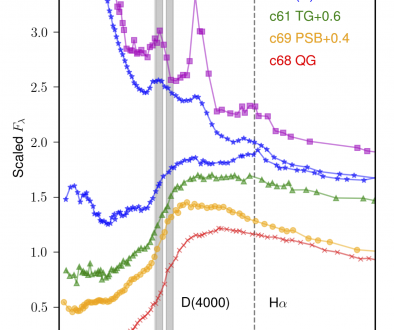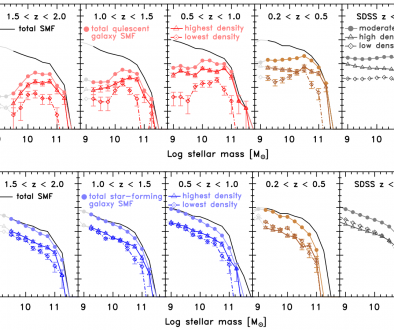Rees 2016 Summary
Powerful radio jets emitted from Active Galactic Nuclei (AGN) are commonly held as one of the primary methods by which star-formation may be suppressed in massive galaxies. Despite this there is much discussion around the overall effect that radio-AGN have on their host galaxies in practise, with some evidence to suggest that these objects not only suppressing star-formation but enhancing it as well.
To investigate this issue we here combine the Fourstar Galaxy Evolution (ZFOURGE) survey with data from the Newfirm Medium band Survey (NMBS) to identify galaxy counterparts for ~400 radio objects detected in deep observations by the Very Large Array at 1.4 GHz. These galaxies are then split into radio star-formers and radio-AGN based upon their radio-excess. If they are more than 3 times brighter in the radio observations than we predict from their star-formation rate, they are classified as radio-AGN.
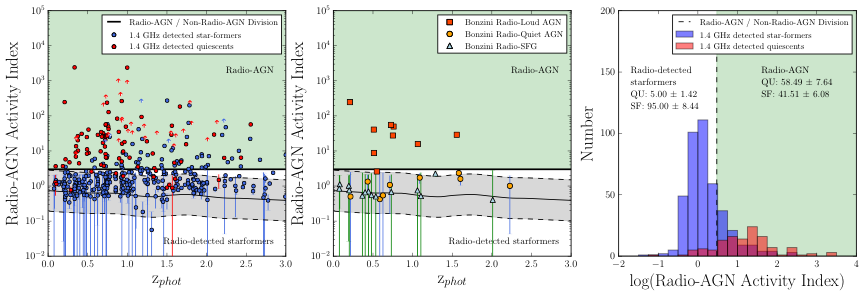
We investigate how the host galaxies of radio-AGN evolve over a large redshift range (0.25-2.25) and find that when matching for mass and redshift there is no difference between galaxies hosting powerful radio-AGN (L > 1e24) and those without.
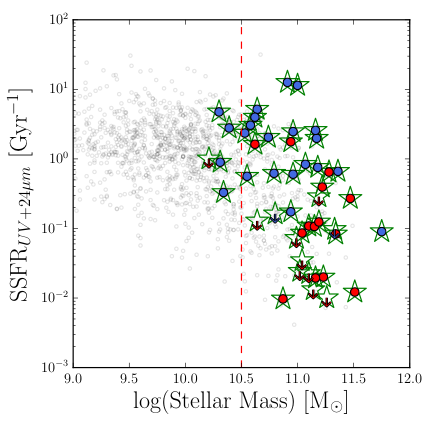
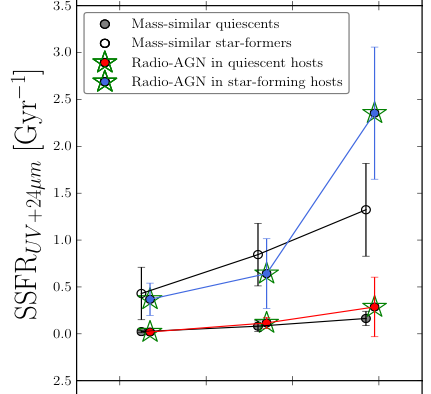
We also investigate the relative prevalence of radio-AGN across this redshift range and find that it the radio-AGN fraction is independent of redshift but evolves strongly as a function of mass.
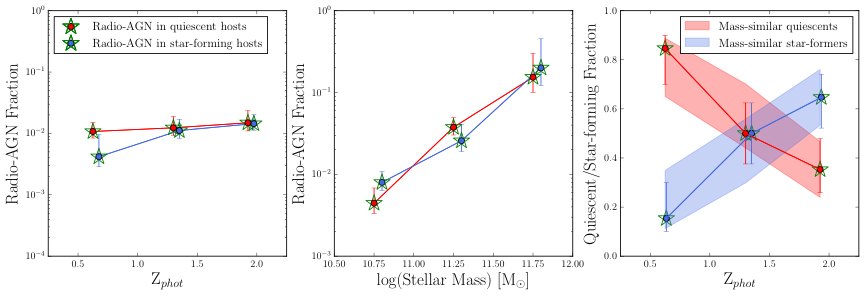
Finally we find that at low redshifts radio-AGN hosts are typically found in quiescent galaxies but above a redshift of 1.5 they become predominantly found in star-forming galaxies with high dusts contents.
